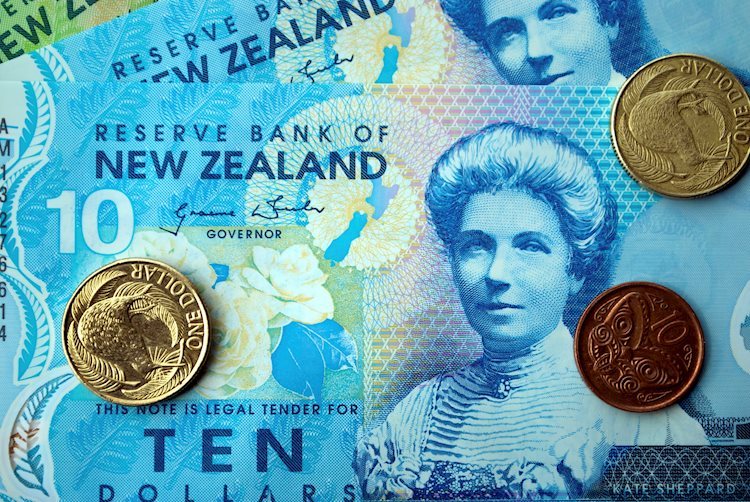- NZD/USD continues the downward trajectory for more than a week.
- NZD faces downward pressure as New Zealand’s Food Price Index fell 0.9% in October.
- Goldman Sachs anticipates the RBNZ to commence rate cuts starting in the fourth quarter of 2024.
- US inflation could grow but at a slower pace, which could put pressure on the US Dollar.
NZD/USD continues the losing streak that began on November 6, trading lower around 0.5870 during the Asian session on Tuesday. The New Zealand Dollar (NZD) faces downward pressure, potentially attributed to the Kiwi Food Price Index (FPI) recording a 0.9% (MoM) decline in October.
Given that food prices constitute nearly 19% of the NZ consumer price index, the FPI holds significance as an indicator of inflation in the country. It tracks the prices of a basket of food items representing the typical spending patterns of New Zealand households.
Goldman Sachs is projecting a drop in New Zealand CPI rates to below 3.0% by Q4 2024. The forecast includes an expectation that the Reserve Bank of New Zealand’s (RBNZ) rate hike cycles are now complete, and Goldman Sachs anticipates the RBNZ to initiate rate cuts starting in Q4 of 2024.
The US Dollar Index (DXY) grapples with challenges as it struggles to halt losses, bidding around 105.70. The Greenback could face headwinds from the volatile US bond yields. The yield on the 10-year US Treasury bond navigates within a short range, standing at 4.63% by the press time.
The market anticipates a rise in the US Consumer Price Index (CPI) for October, but at a slower pace. Simultaneously, the forecast for the core annual rate remains stable. If the actual data aligns with these expectations, it could solidify the market’s belief that the Federal Reserve (Fed) has concluded its interest rate hikes. This, in turn, could reinforce the downward pressure on the US Dollar (USD).

